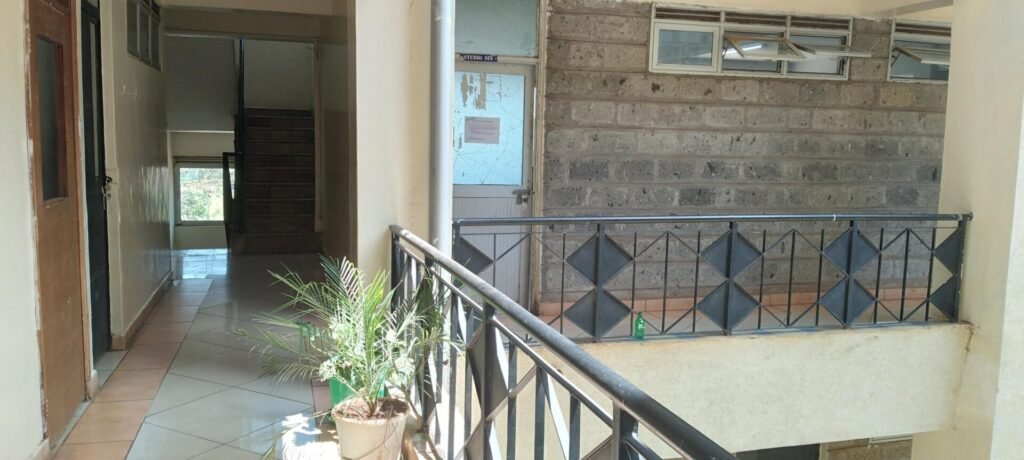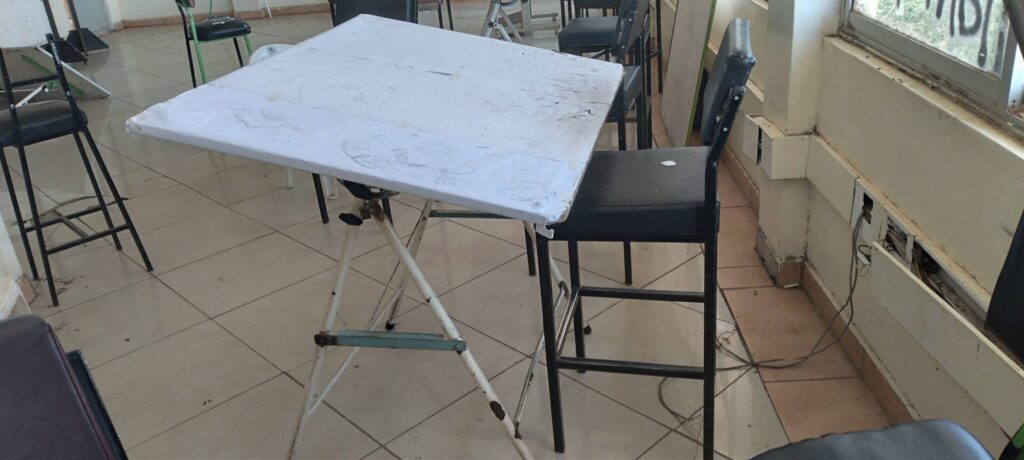Sitting five stories high inside the reputable institution whose name invokes high esteem for academia, this building dubbed ‘Technology House’ is a nightly home to JKUAT‘s (Juja) nocturnal scholars.
A haven for all-nighters, Tech house has probably seen millions of gallons of midnight oil burnt over its tenure of service, all thanks to the 24-hour studio culture.
It’s one of the most profound marks of an architecture student, only second to them carrying breathtaking paper models around campus.
The studio culture abhors rest, driving an ‘ethical’ aversion to sleep in architects.

Day and night are seen as mere illusions of time, guile meant to dupe eyelids to fold into sleep. But guess who’s smarter than that! Day or night, any time is working time.
The call to art appears to be greater than the slightest urge for a nap.
A win for nocturnals

In the depths of the night, you’ll find them in the studios, captivated in painstaking design work, with a coffee mug within the arm’s reach, headphones strapped and instrumentals on the stereo.
While at it, they seem so invested in the work, so much you can almost swear they’re having the ‘best time of their lives.’
Since design work is that interesting, the studios had to be made accessible 24/7, and so it was deemed fit to keep the doors of Tech House (the studios are found here) open all night long – a win for nocturnal book worms.
That’s how Tech House became a solace for anyone willing to trade sleep for late-night study time, and that’s about every scholar here, save for a few who’ve been heavily stereotyped for having life too easy while the rest agonize.
In JKUAT, architecture is hardly the only discipline with rigorous tasks. Once you find yourself enrolled in some colleges here, you might as well turn nocturnal and save a couple late-night dates with Tech House.
Perks of late-night study

Studying in the late-night at Tech House rewards with pin drop calmness, serenity unmatched by anything the day has to offer. It’s as if darkness engulfs every bit of disturbance, and conceals it behind its invincible curtain.
The only ‘nuisance’ it spares are the unrelenting calls of crickets and bullfrogs looking for their lovers. If a frog chanting at the top of its voice all night to find its mate is love, then it’s true what they say; love makes you do crazy things! But honestly, in all dignity, there’s got to be a better way, especially for bullfrogs!
Typical and passionate scholars
In that spirit, nothing spells love for academia more than an all-nighter; a quiet, still and peaceful time spent wrapping the head around knowledge. But only a passionate scholar goes to such lengths after the knowledge.
For the typical student, the relationship with books is mostly love-hate, governed by seasons of the semester. First, there’s the onset of the semester. Here, there’s nothing much going on; everyone is adjusting their heads for new book-loads of knowledge.

When the semester turns a little over a month old, coursework begins to gather. There isn’t much content to go about so no one is under pressure yet.
Two months into the semester, the course work has picked up a steady pace enough to faze the typical student. The passionate scholar who has been crunching it in small chunks can keep up without effort. But still, no pressure, the ‘typicals’ keep rolling.
Tables turn when the semester is at its peak, at three months old. At this point, everything pours in torrents: CATs, RATs, lectures, assignments, and reports. The dons don’t make it easy either. They all want to pump in more lecture hours and tasks.
The migration begins
Here’s when a faction of the typical students jumps ship to the faction ‘Okoa sem,’ to save the semester. You’ll hear them keep count of the days to exams, “Exams zimebaki one month tu, acha niokoe sem.” (It’s only a month to exams, let me save the semester).
That is their rallying call. It signals the beginning of the nocturnal migration.

By the time it clocks a few weeks to exams, it’s pouring hail storms, and now every remaining scholar joins the great nocturnal migration.
Like ravenous wildebeests, scholars can no longer rely on the drying fields of daytime, its time is too scant to fill up with enough knowledge.
They begin to migrate into greener fields of night time. Here there’s certainly enough study time to fill up their heads to satisfaction.
This is the wonder of JKUAT. You can be sure to catch it every final six weeks of the semester. It’s the price scholars have to pay to survive the harsh savanna plains of academia.
But, eventually after filling up on all that knowledge, it’s inked down onto exam sheets, and dismissed from the mind for good. Only the few passionate scholars hold on to the knowledge.
The memes don’t lie
All in all, it’s fair to say you have barely been through JKUAT if you never had an experience of the migration.

Well, naturally the institution has never been easygoing. If anything, it’s built a name around the exact opposite; being up-tight, rigorous, and sometimes downright severe.
The memes don’t lie. There’s no piece of cake here. It’s a rollercoaster; sweet if you have guts for the ride, but it gets bumpy as often as it thrills.
At some point, everyone gets a taste of the hardship. Regardlessly, there’s no better place to call campus.
[Cover image: Tech House in JKUAT. Credits: Pauline Wambui/Google Maps]


Tech House!! Dark, dark days those ones! I enjoyed reading this article. Keep writing!❤️
Dark days, but we survived. Appreciated, Rusty Fingers!
Wow…All truth.
Big up
Appreciated, and glad to have you on Unleash Mag!
Very related stuff.. well written too.
Thank you K.M. Muthamia. Stick around for more.
wow this is soo true. Thumbs up for this amazing article
Thank you Neddy!
Keep it Unleash
Wow… What a piece!
Glad you liked it Jesse
True to your word, Dan. Your fingers help articulate more than you could ever say. Keep it up!
Appreciated. Good to have a man of your insight on Unleash Mag.
The paper models thou!!! too relatable, dark n sweet times those were. Out here we still trans-night to beat project deadlines, thanks to Tech House the culture is deeply rooted.
Awesome piece! An excellent description of the journey to satisfy the board of examiners 😃
Well , things hit different even some high stake meetings hall 7 did it justice. Great hand Dan.